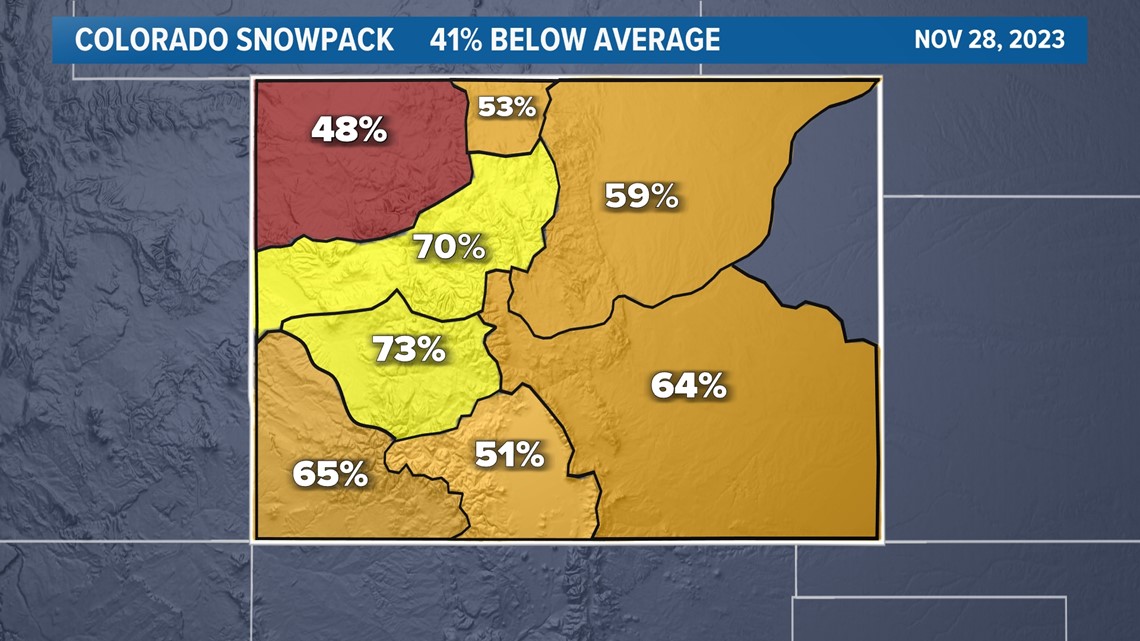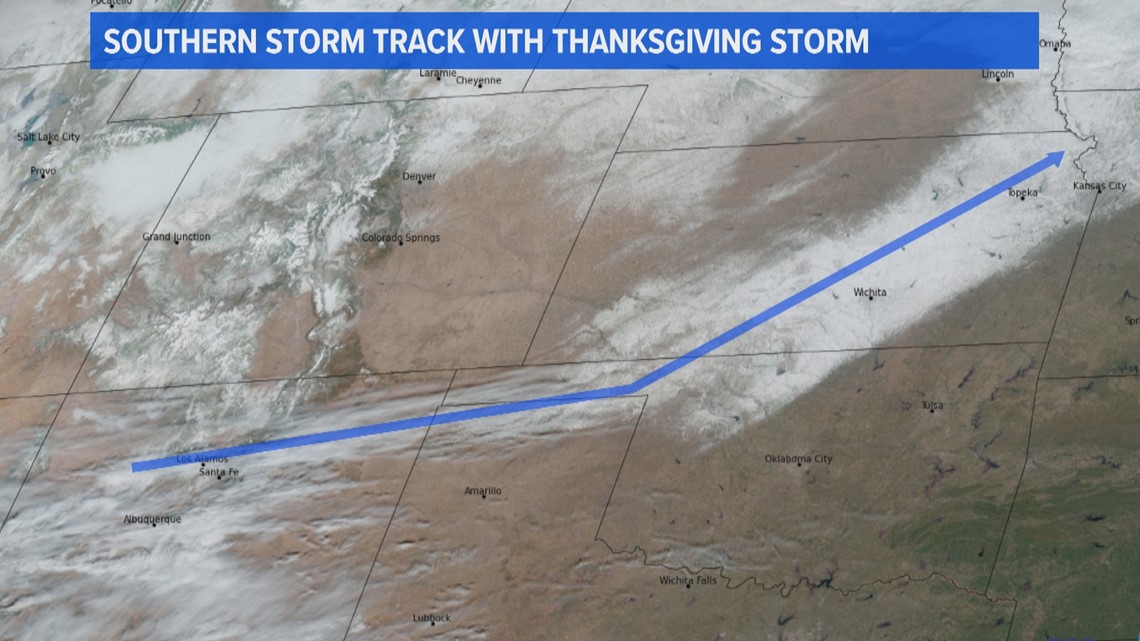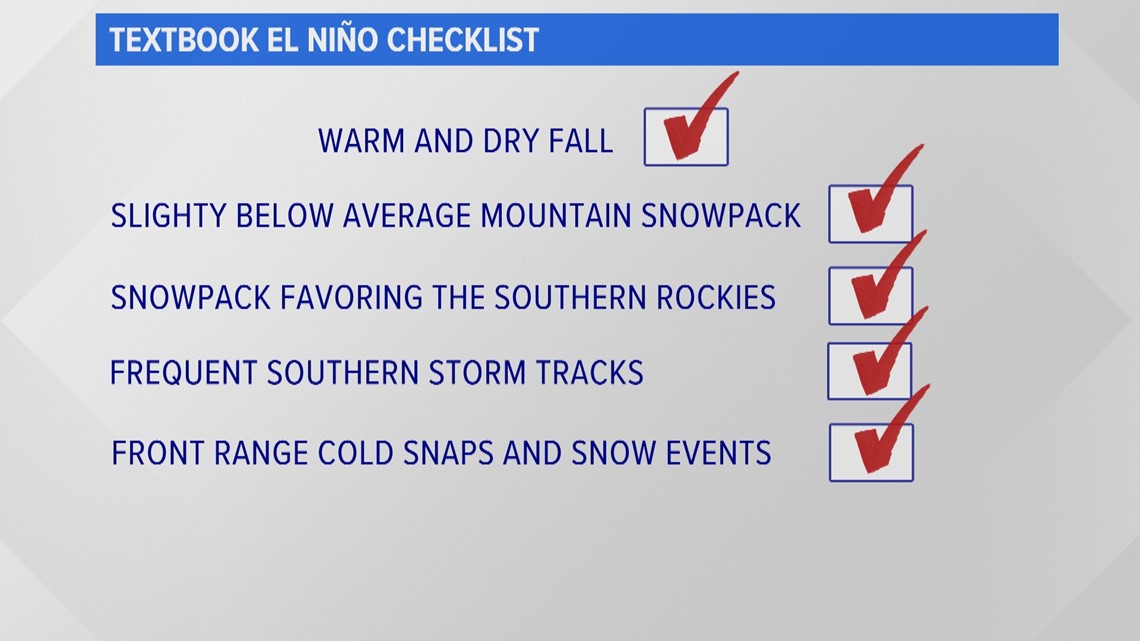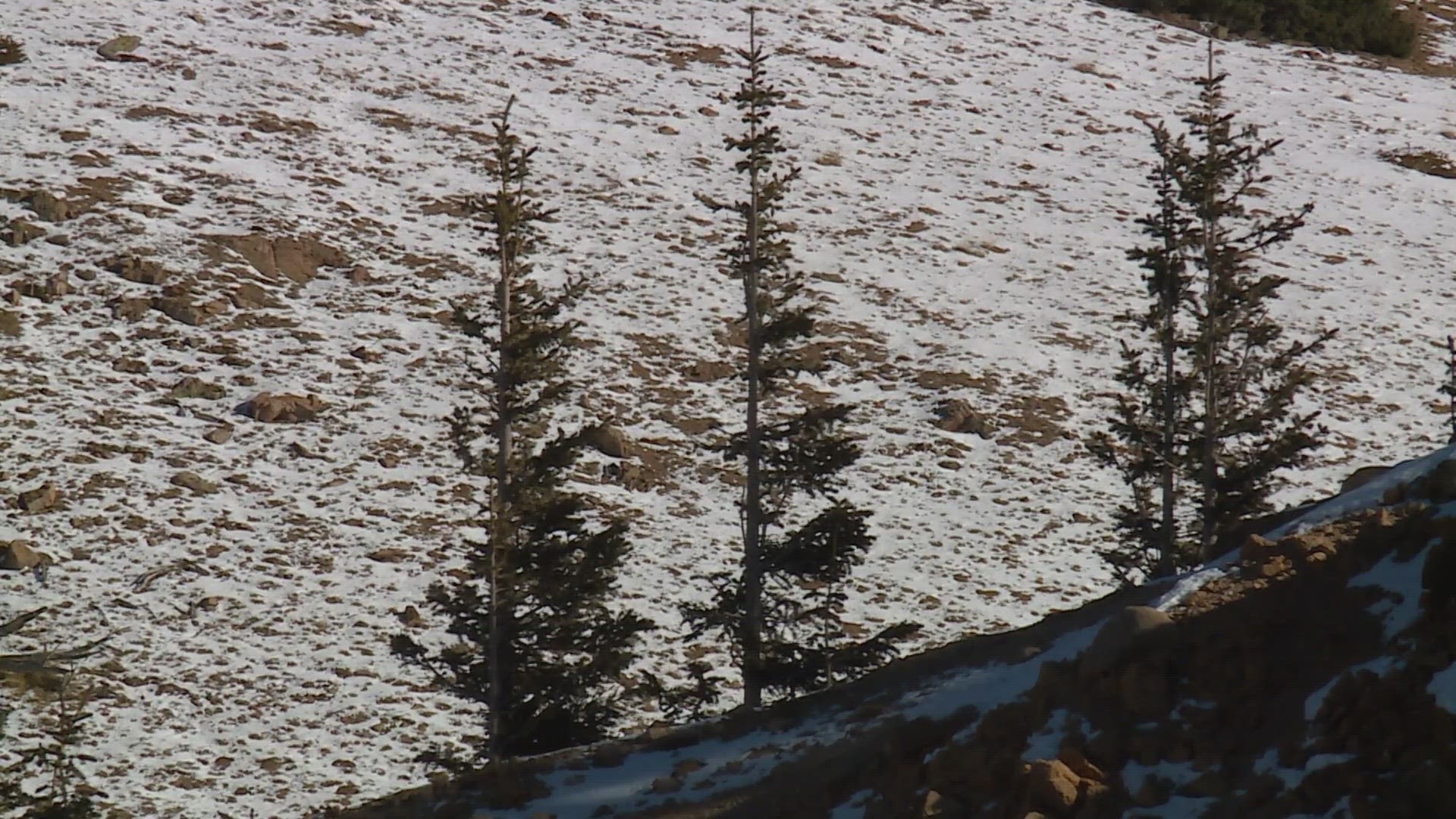DENVER — There’s a connection between El Niño and Colorado's weather – and the evidence of that impact starts in the Rocky Mountains.
El Niño refers to warmer than normal ocean temperatures thousands of miles from Colorado in the tropical Pacific Ocean and historically, the El Niño climate patterns resulted in slightly below-average snowpack in the Colorado mountains.
As of Tuesday, statewide snowpack was 41% below average.
El Niño patterns also favor more snow to the south and less to the north. So far, that has also been the case at least regionally.
The data show the highest snowpack numbers in New Mexico and Arizona while the lowest snowpack is to the north in Idaho, Oregon and northern California.


El Niño also favors frequent southern storm tracks and the Thanksgiving storm was just a perfect example. There was a clear bullseye of snow seen from satellite after the storm cleared. It started in New Mexico and extended with a thick snow path right through the state of Kansas.


And while El Niño climates tend to result in below-average snowpack in the mountains, they typically deliver frequent cold storms to the Front Range below 9,000 feet with big upslope snow events.
The Thanksgiving storm showed the Front Range impacts during El Niño. It brought the first negative temperatures of the season along with massive upslope snow dropping 10 to 17 inches throughout parts of Larimer County.


Another piece of evidence showing the presence of a classic El Niño season is the warm and dry fall across Colorado. El Niño patterns are initially all about the heat. It stems from warm ocean water and leads to abundant heat in the atmosphere. With 2023 likely to go down as the warmest year in human existence, and the strong El Niño is part of that formula.
All the ingredients are in place at least early on for a textbook El Niño. The ingredient that is in most jeopardy of fading would be the Front Range temperatures.
Traditionally, there would be below-average temperatures for the winter months of December through February. For that to happen there will need to be an increase in the frequency of the storms because the warm spells have been far exceeding averages.
SUGGESTED VIDEOS: Colorado Climate

